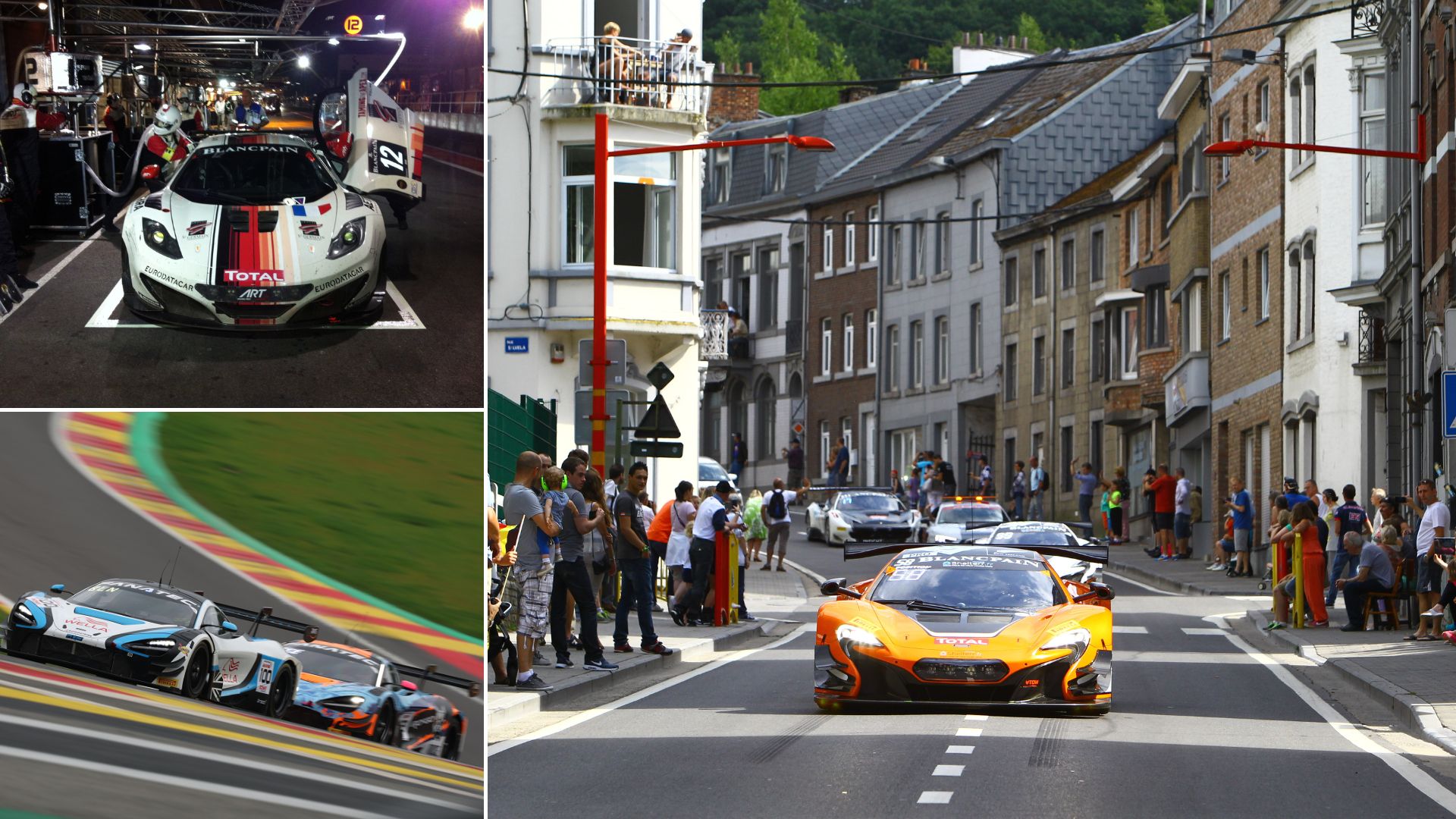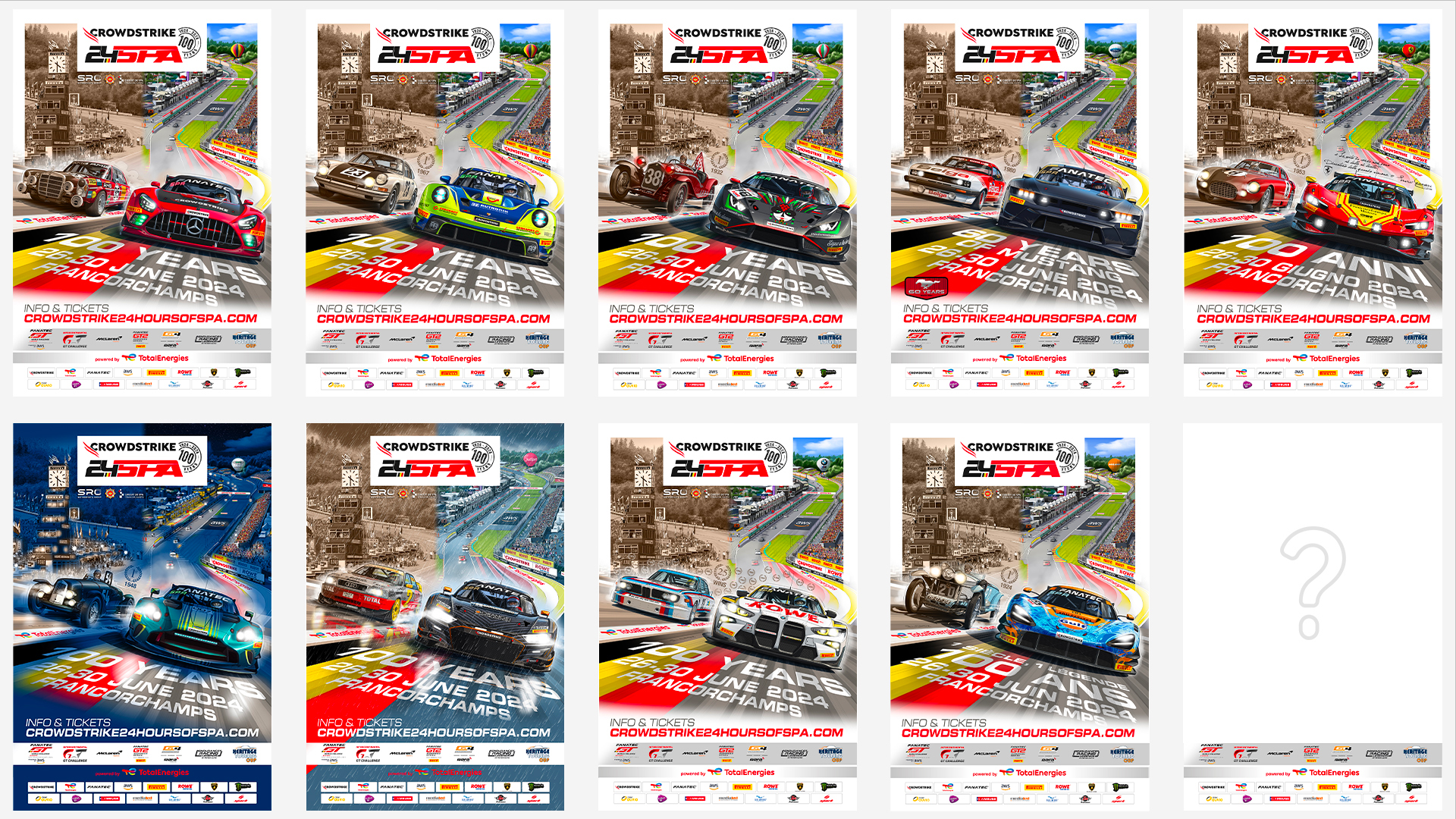- A century has passed since Bignan won the inaugural race in 1924
- McLaren in the spotlight on ninth of ten collector’s edition posters
- Less than one week before the first track action at the centenary edition
It happened 100 years ago, marking the start of an incredible story that endures to this day. On Saturday 19 July 1924, the very first 24-hour race got underway at Spa-Francorchamps. There was no official name at the time, with a variety of different titles used. One hundred years later, what we now call the CrowdStrike 24 Hours of Spa has become the biggest GT race in the world, and the countdown to the start of its centenary edition, on Saturday 29 June at 16:30, is almost over.
In the build-up, nine posters have been presented by SRO Motorsports Group, one for each of the manufacturers participating in this year’s race. A special 10th instalment, which will be revealed next week, should also prove very popular. For now, the ninth poster presents another active manufacturer, linking the first 24 Hours in 1924 with the 76th edition that will be held this year.
To the left, climbing Raidillon – a corner that did not even exist at the time – we find the Bignan 2 Litre that won the inaugural edition. Back then the results were by category, with no general classification, but this is the car that went down in history as the most efficient of the 27 entries. Driven by the Belgian Henri Springuel and the Frenchman Maurice Becquet, it covered 1,879km at an average of 78 km/h, reaching top speeds of around 135 km/h.
A quick glance at the poster is enough to understand how much cars have changed in 100 years. Alongside the Bignan, we see a very different machine: the McLaren 720S GT3 EVO from Garage 59. In 2024, it will carry the hopes of the British marque, which is yet to add victory at Spa to its long list of successes.
McLaren's immense track record includes 20 world titles in Formula 1 (12 for drivers and eight for constructors), 184 grands prix victories, three wins at the Indy 500 and one at the 24 Hours of Le Mans. Despite all of this, it is yet to even secure a podium finish at the CrowdStrike 24 Hours of Spa. Of course, the brand does not yet have an especially long history at the Belgian endurance classic.
Its first outing was in 2011 with the McLaren MP4/12C GT3. The list of teams running the car during its early years was impressive: Hexis Racing (FIA GT1 world champion in 2011), ART Grand Prix (the squad founded by current Ferrari F1 boss Frédéric Vasseur), Boutsen Ginion and Von Ryan Racing. But despite the quality of the teams and drivers – who included Bruno Senna, Olivier Panis, Alvaro Parente, Eric van de Poele and future winners Alex Sims, Kevin Estre and Côme Ledogar – the MP4/12C GT3 only managed a best finish of ninth in 2012 with Von Ryan Racing.

Though it secured a front-row start in 2015 thanks to Kevin Estre, the 650S GT3 could not improve on that result, but the arrival of the 720S GT3 began to change the situation. In 2021, the Jota team took seventh place (Bell/Barnicoat/Wilkinson) and backed it up by finishing eighth the following year. In 2023 the brand scored its maiden class victory: fielding the new 720S GT3 EVO, Optimum Motorsport won the Gold Cup with De Haan/MacDonald/Fagg/Gamble.
In addition to the Garage 59 car entered in Pro for Goethe/Gamble/MacDonald, the McLaren will also be a strong presence in the classes, with four examples aiming for Bronze Cup victory and another among the favourites in Pro-Am. Its line-up includes GT Academy winner Jann Mardenborough, recently the subject of the Gran Turismo movie, who returns to Spa at the wheel of a 720S EVO GT3.
Could this model add another class win or even give McLaren its first overall victory at the CrowdStrike 24 Hours of Spa? We won't have to wait much longer to find out. In exactly one week, cars will be on-track for a three-hour test session, which replaces the Bronze Test following resurfacing work on parts of the circuit. On Wednesday afternoon attention will turn to the parade, followed by practice and qualifying on Thursday, the Superpole on Friday, and the start at 16:30 on Saturday 29 June. Can you feel the tension building?
Did you know?
Inaugurated in 1921, with a maiden Belgian Grand Prix for motorcycles following in 1922, the original 15km circuit formed a triangle between Francorchamps, Malmedy and Stavelot. While the first races ran clockwise, there was doubt ahead of the inaugural edition of the 24 Hours, with some feeling that running anti-clockwise would be more appropriate. The final decision to run clockwise only came a few weeks before the race. The circuit was subsequently modified several times – Raidillon appeared in 1939 – before the biggest change: the creation of a new section between Les Combes and Blanchimont. In 1979, the length was reduced to around 7 kilometres.
Note: Like all of the collector's edition posters, you can purchase this one on-site at an official store during race week, or from the merchandising section of the event’s official website.
_____
THE CENTENARY TICKETING HERE


